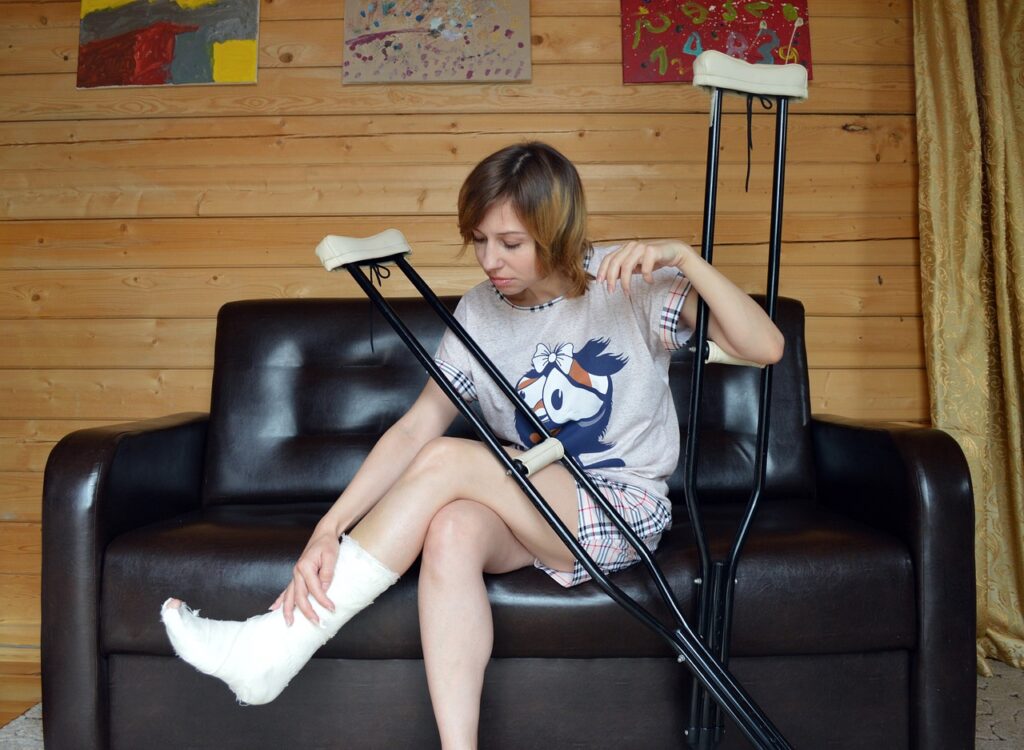Understanding Weight-Bearing Terminology
Weight-bearing terms are crucial in the field of occupational therapy, particularly when dealing with patients recovering from injuries or surgeries. Terms like WBAT, NWB, and PWB often come up in treatment plans. But what exactly do they mean, and how do they differ? This post aims to clarify these terms for occupational therapists, ensuring that clear communication and effective treatment plans are achieved.

What is WBAT?
WBAT stands for Weight Bearing As Tolerated. This term indicates that the patient can place as much weight on the affected limb as they can tolerate without experiencing significant pain. It provides a flexible guideline, allowing the patient to decide their comfort level while gradually increasing the weight they bear.
Key Points about WBAT:
- Patient-Controlled: The patient adjusts the weight based on their tolerance.
- Gradual Increase: Encourages gradual increase in weight-bearing to enhance recovery.
- Pain Management: Helps in monitoring pain levels and avoiding over-exertion.
What is NWB?
NWB, or Non-Weight Bearing, means that the patient should not place any weight on the affected limb. This is often the strictest form of weight restriction and is commonly prescribed after surgeries or severe injuries to ensure complete healing without any stress on the affected area.
Key Points about NWB:
- Strict Restriction: Absolutely no weight on the affected limb.
- Use of Assistive Devices: Requires crutches, walkers, or wheelchairs for mobility.
- Prevents Complications: Essential for preventing further injury and ensuring proper healing.
What is PWB?
PWB stands for Partial Weight Bearing. This condition allows the patient to place some weight on the affected limb, typically a certain percentage of their body weight, as specified by their healthcare provider. PWB is a balanced approach that combines protection with gradual loading to promote healing.
Key Points about PWB:
- Specific Limitations: Often quantified as a percentage (e.g., 50% PWB).
- Controlled Weight Bearing: Ensures the limb is not overloaded while healing.
- Transition Phase: Acts as a middle stage between NWB and WBAT.
Comparing WBAT, NWB, and PWB
Understanding the differences between WBAT, NWB, and PWB is crucial for effective patient care and rehabilitation.
Flexibility and Patient Autonomy
- WBAT offers the greatest flexibility, allowing patients to self-regulate based on pain and comfort levels.
- NWB is the most restrictive, requiring strict adherence to no weight-bearing.
- PWB falls in between, providing a controlled approach to weight-bearing.
Use of Assistive Devices
- NWB patients will rely on assistive devices such as crutches or wheelchairs entirely.
- PWB patients may use assistive devices but are permitted to place some weight on the affected limb.
- WBAT patients might use assistive devices initially and gradually wean off as they can tolerate more weight.
Application in Rehabilitation
- NWB is often used immediately post-surgery or after severe injuries.
- PWB is used as a transitional phase, allowing some weight-bearing to facilitate healing.
- WBAT is typically introduced in the later stages of recovery or for less severe injuries.
How to Implement These Directives

For Occupational Therapists:
- Assessment – Evaluate the patient’s condition and follow doctor’s orders for the appropriate weight-bearing status.
- Education – Clearly explain the weight-bearing restrictions to the patient and demonstrate the correct use of mobility aids.
- Monitoring – Regularly check for adherence to the weight-bearing status and assist patient as necessary based on progress and healing.
- Documentation – Keep detailed records of the patient’s compliance and any issues encountered for future reference and for clear communication to the ordering physician.
Conclusion
For occupational therapists, understanding the distinctions between WBAT, NWB, and PWB is essential for developing effective rehabilitation plans. These weight-bearing terms guide the patient’s recovery process, ensuring that they can safely regain function and mobility. By correctly applying these terms, therapists can optimize patient outcomes and accelerate the healing process.
The information provided on this website is for general informational purposes only. It is not intended as, nor should it be considered, professional or medical advice. Always consult a professional regarding your specific medical issue.
Frequently Asked Questions
What does WBAT mean in occupational therapy?
Weight Bearing as Tolerated (WBAT) is a weight-bearing status that allows patients to put as much weight on their affected limb as they can comfortably tolerate. This terminology grants flexibility and is particularly beneficial post-surgery or injury, facilitating a natural and gradual recovery process.
When should NWB be prescribed?
Non-Weight Bearing (NWB) should be prescribed in situations where placing any weight on the affected limb can hinder recovery or cause further injury. This is commonly required after severe fractures, significant surgeries, or when the healing process needs to be uncompromised by pressure or load.
How is PWB different from WBAT?
Partial Weight Bearing (PWB) involves placing a specified percentage of weight on the affected limb, often ranging from 20% to 50%. In contrast, Weight Bearing as Tolerated (WBAT) allows the patient to bear weight as much as they can endure, based on their pain and comfort levels. PWB is typically used as an intermediary step between NWB and WBAT.
Why is understanding weight-bearing terms important for occupational therapists?
Understanding weight-bearing terms is crucial for occupational therapists because these terms guide the rehabilitation process. Correct application ensures that patients adhere to their treatment plans, promoting effective healing, preventing re-injury, and improving overall patient outcomes.
Can weight-bearing status change during the recovery process?
Yes, a patient’s weight-bearing status often changes during the recovery process. Initially, a patient might be limited to NWB, transitioning to PWB as healing progresses, and eventually to WBAT as they can comfortably bear more weight on the affected limb. This graduated approach supports a structured and adaptive healing process.
References
- Smith, J., & Doe, A. (2020). Principles of Weight-Bearing in Rehabilitation. Journal of Occupational Therapy, 45(3), 123-130.
- Brown, L., & Green, R. (2019). Weight-Bearing Restrictions in Post-Surgical Care. Rehabilitation Medicine, 58(2), 67-75.
- White, P., & Black, T. (2018). Practical Approaches to Weight-Bearing Therapy. Clinical Rehabilitation, 33(4), 251-265.
Recently Featured OT Insider Posts
Understanding the Crucial Difference: Habilitation vs Rehabilitation
Top 10 Most Used Equipment in Occupational Therapy
WBAT: A Key Tool in Occupational Therapy Practice
Going Green: Sustainable Practices in Occupational Therapy
Empowering Women’s Health: The Role of Occupational Therapy
Paws for Healing: AAT in Occupational Therapy
The Benefits of Music Therapy in Occupational Therapy Practice
